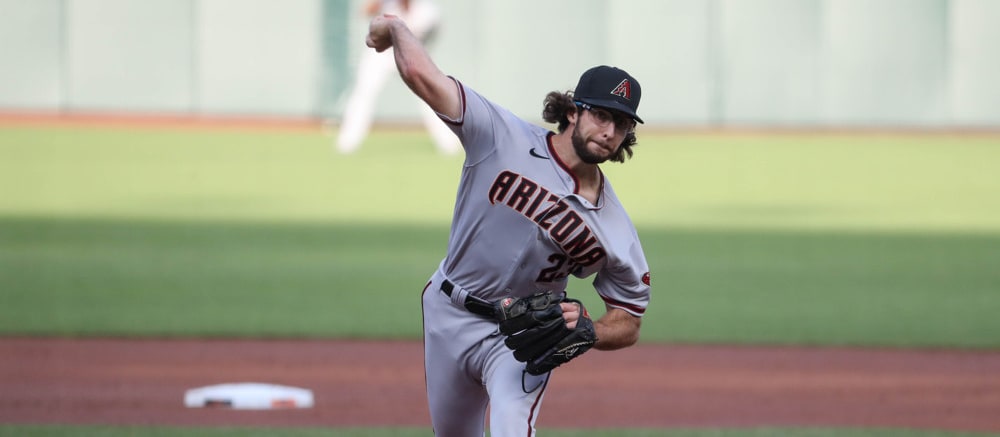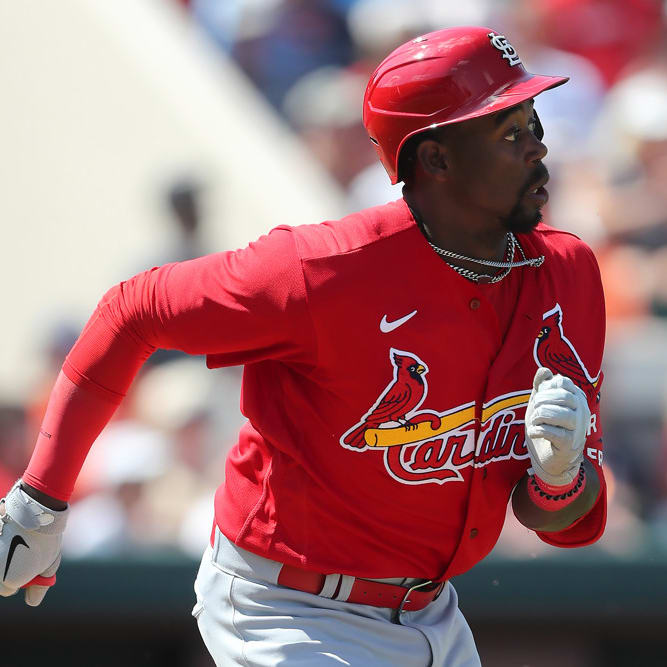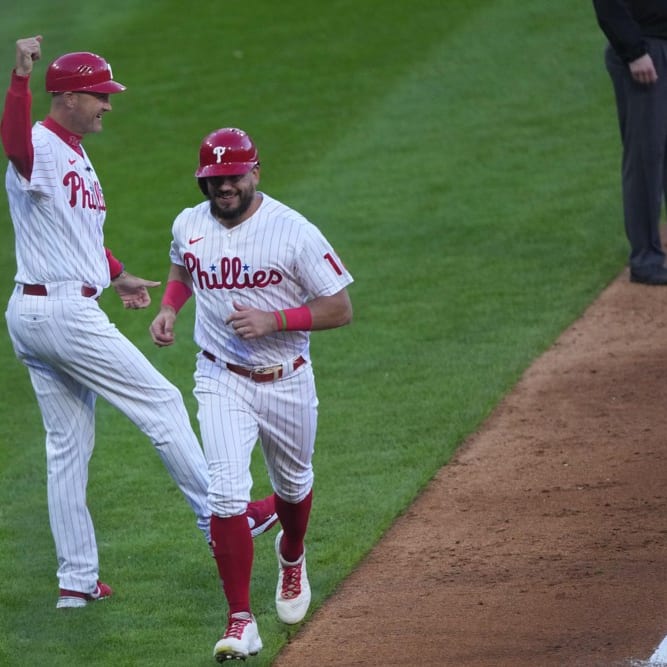This article is part of our Mound Musings series.
What an interesting question. For years there has been a fairly reliable set of pitching characteristics you could use to measure likely effectiveness. We've sliced and diced the pitchers of the day seeking the answer to our fantasy dreams. You, the readers, have been awesome in asking questions and making observations. In 2023, it has been a serious challenge. However, we won't give up … never surrender! So, if you have a pitching question, fire away, that's what we're here for.
Take a Walk on the Wild Side: I decided to try and correlate a few individual pitching attributes – walk rate, strikeout rate and homeruns allowed – and combined them to see if they could be a predictor of performance.
First, with a modest minimum number of innings, I found that only 14 pitchers had a walk rate below two walks per nine innings. Interestingly, the leader, Seattle's George Kirby is a half a walk per nine better than the next guy (Zach Eflin) on the list. That is poor control throughout the league. I also found that strikeout rate is down, and only five of the 14 best control pitchers are also averaging at least a strikeout per inning. Again, that is relatively poor performance. Here are our five dual qualifiers:
- Logan Gilbert (Mariners)
- Joe Ryan (Twins)
- Zac Gallen (Diamondbacks)
- Zack Wheeler (Phillies)
- Braxton Garrett (Marlins)
Certainly, an interesting list. However, I wanted to add home-run rate, and based on allowing less than one home-run per
What an interesting question. For years there has been a fairly reliable set of pitching characteristics you could use to measure likely effectiveness. We've sliced and diced the pitchers of the day seeking the answer to our fantasy dreams. You, the readers, have been awesome in asking questions and making observations. In 2023, it has been a serious challenge. However, we won't give up … never surrender! So, if you have a pitching question, fire away, that's what we're here for.
Take a Walk on the Wild Side: I decided to try and correlate a few individual pitching attributes – walk rate, strikeout rate and homeruns allowed – and combined them to see if they could be a predictor of performance.
First, with a modest minimum number of innings, I found that only 14 pitchers had a walk rate below two walks per nine innings. Interestingly, the leader, Seattle's George Kirby is a half a walk per nine better than the next guy (Zach Eflin) on the list. That is poor control throughout the league. I also found that strikeout rate is down, and only five of the 14 best control pitchers are also averaging at least a strikeout per inning. Again, that is relatively poor performance. Here are our five dual qualifiers:
- Logan Gilbert (Mariners)
- Joe Ryan (Twins)
- Zac Gallen (Diamondbacks)
- Zack Wheeler (Phillies)
- Braxton Garrett (Marlins)
Certainly, an interesting list. However, I wanted to add home-run rate, and based on allowing less than one home-run per nine innings, the list trimmed to just two names – Gallen and Wheeler. I think I need to recognize those two as exemplary performers in a pitching-lean season. Combined they are 22-10 but with a so-so ERA of 3.42.
The worst of it is the never-ending challenge of identifying an upcoming good day or bad day. It's almost impossible. What did you have for breakfast? Are you feeling extra perky today? All you can do is wait and see. It will balance out over the course of a season, but late in the year, the "balance" is far short of expectations.
Money for Nothing: I'm not sure if they get their chicks for free, but money is often buying little or nothing. The three teams with the highest 2023 payrolls (Mets. Yankees and Padres – all with payrolls exceeding 250 million dollars) are currently not assured of playoff spots. To provide comparative numbers, the AL East leading Orioles have a payroll of just over 70 million dollars (28th).
I suppose you could say that injuries play a big part in that performance equation. Maybe there were cases of little finger or thumb blisters, but the bottom line is a huge percentage of the noncontributors have watched many of their team's games from the trainer's room. I'm not able to offer a cast-in-stone solution to the injury epidemic, but from a pitching perspective, better early training with repeatable, lower stress mechanics definitely helps. It's true big money pitchers aren't the only ones getting hurt, but the biggest injury risks do generally appear to match up with bigger salaries.
There has to be an angle: Good or bad, after looking at walk rate, strikeout rate, homeruns allowed, and even salaries, we haven't been able to identify a full mound corps for a fantasy team that is likely to perform well, let alone enough pitchers to go around throughout the league. Doesn't there have to something that we can use in our attempt to predict future success?
I have always paid some attention to BABIP, but I find myself relying on it a bit more these days. I consider a BABIP of just under .300 to be average. The further away it gets from that median, the more likely an adjustment could be coming. It's not infallible, as poor defense tends to inflate the number (less likely to adjust to more normal), and as much as I resist saying it, some pitchers are just plain unlucky. How frustrating is it to watch a game with your pitcher allowing hit after hit with nothing hit hard at all? So, taking a quick peak, who might be due for a bit of good luck?
The highest current BABIP among qualifying pitchers is Baltimore's Jack Flaherty (until recently with the Cardinals). His .345 is grossly inflated, and I have watched more than enough innings to verify he has been severely bitten by the bad luck bug. Will that luck change? Owning him on every one of my fantasy teams, I can only hope so.
It also works (sometimes) for pitchers who have posted good peripherals despite an unlucky BABIP. Case in point, Toronto's Kevin Gausman. He is 9-7 with a solid 3.24 ERA and 1.16 WHIP, and he has accomplished that with the third highest BABIP (.340). That's pretty amazing. I'm adding him to my list of arms due for a strong stretch run. Look for progress from pitchers with a BABIP of between .320 and .340, while conversely being leery of those with a BABIP of between .260 and .280.
What about all these kids: While I have never really tracked it in the past, I am pretty sure there has never been a season with so many kid pitchers debuting. It seems like a dozen a week or so – some pretty much ready for the show, and others not even close.
The most blatant result has been an avalanche of young arms incapable of throwing strikes, at least incapable of doing it with any consistency. I again used my benchmark of 90 innings pitched, and guess how many "kids" have logged a BB/9 under 2.00? One, LOL. Bryce Miller of Seattle at 1.84/9 is the best we have. Next is Brayan Bello of Boston at 2.34/9. Cleveland's Tanner Bibee checks in at 2.85/9, and that's everybody under 3.00/9. Is it coincidence these are some of the better young performers? I think not. Why is focusing on command so difficult to understand? I might not be the saltiest cracker in the box, but I believe I would tell young pitchers to work on strike throwing.
We'll watch closely to see which direction this ends up going, but my best advice today would probably be to tread very cautiously with as yet unproven prospects. We need to know which guys are ready to pitch and which are still just throwers.
Some Notable Rotation Ramblings:
- Interesting young pitchers just keep dropping. Seattle's Emerson Hancock was a recent loss, being pulled after two scoreless innings against the Astros. I really didn't feel he was quite ready for prime time, but this shoulder strain will put his progression on hold. I'm moving him to the "check back again in 2024" list.
- I've been waiting to see how far the Giants' Kyle Harrison has progressed, and the southpaw made his MLB debut earlier this week. The tough Phillies tried waiting him out, but he threw more strikes than expected. His fastball at the top of the zone is his ticket if he can throw enough strikes to keep hitters honest.
- Paul Blackburn continues his attempt to draw my attention. The Oakland "ace" has posted pretty respectable numbers the past few weeks and currently sports a 3-3 record with a 4.00 ERA (he missed the first couple months of the season). Most notable in his accomplishments is a significant jump in strikeout rate.
- It's not panic time, but I am getting concerned about Michael Soroka being able to contribute this year. The season has progressed far enough that the Braves' righty should be settled in, but the team has clearly decided caution is the best plan and has very conservatively controlled his workload, mostly in Triple-A.
- Minnesota's Dallas Keuchel carried a perfect game into the seventh inning against Pittsburgh last weekend. He was removed after allowing a one-out double. Don't get excited. He also recorded his first 2023 strikeout (in his third start) with his fastball topping out in the mid-80s. Stay very, very, far away.
- You can't help but like the arm of Cincinnati's Hunter Greene, but he was anything but sharp in his first start in two months following a hip injury. The Jays tagged him for 10 hits, including five homeruns, while he recorded just nine outs. He's clearly better than that, but he has little season left to get back in shape.
Endgame Odyssey:
With Paul Sewald now in Arizona, the Mariners bullpen has been providing us with some spirited competition for the closer's gig. Both Andres Munoz and Matt Brash have seen action in the ninth, but neither has locked down the job. My money is on Munoz. In Detroit, it appears Alex Lange might have received a mental break from closing. His command deserted him recently, opening the door for Jason Foley, but with Lange's better closer profile, I expect to see him back in the ninth inning if he starts throwing strikes. So far, so good, as he has recorded a couple saves in his last couple outings. The Cubs' Adbert Alzolay had a scare last weekend, but his overall numbers since being named the team's primary closer have been solid, and he appears to be pretty much locked into the role. Former A's closer Dany Jimenez has quietly returned to Oakland after a stint at Triple-A Las Vegas as he worked his way back into shape following an April shoulder injury. Trevor May has done a reasonable job as their closer, but he's no lock, and Jimenez could eventually get into the mix. The Cardinals continue trying to identify the problem with Ryan Helsley's elbow, but he continues to suffer pain following each session, so a return date is anybody's guess.
As I look over my closer notes, it may be time to review some of the bullpen scenarios in depth one last time. We'll plan on that next week.










